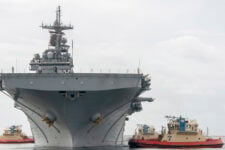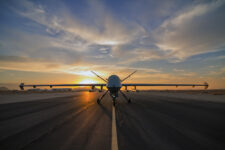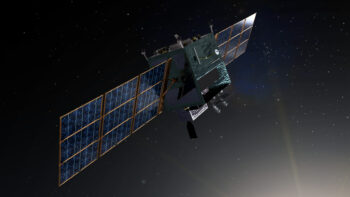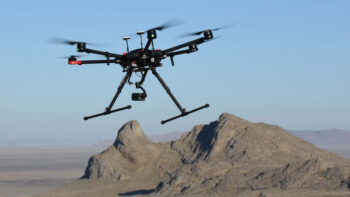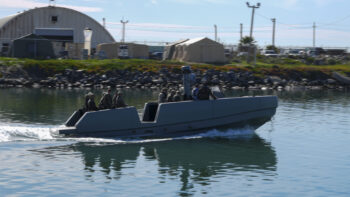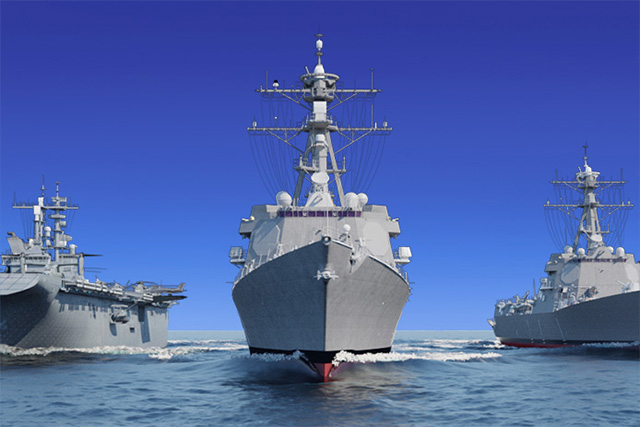
Raytheon Missiles & Defense is offering agile DevSecOps—short for Development, Security and Operations—based surface combatant software development to answer the U.S. Navy’s call for a system that will revolutionize its ability to respond to and outpace threats.
Consider it the military’s version of speed to market.
Military agencies are adopting some of the same software development techniques that commercial tech companies use to innovate and iterate quickly. And, they’re doing it not to boost sales, but to stay ahead of attacks that move faster than anything in the history of warfare.
“You don’t want to be deployed to the middle of the ocean and learn that there’s a new threat you aren’t prepared for,” said retired U.S. Navy Capt. Steve Lott, a former commanding officer of the guided missile cruisers USS Vincennes (CG-49) and USS Chosin (CG-65), and now a director of requirements and capabilities at Raytheon Missiles & Defense.
That imperative to stay prepared is part of why Raytheon Missiles & Defense, a Raytheon Technologies business, is offering software development methods like agile and DevSecOps, along with cloud computing architectures, to develop, test and deliver capabilities rapidly to the Aegis combat system.
Both can help meet the need to address new threats sooner – which is why, in the summer of 2020, the Navy called on industry to establish a prototype software factory for surface combatants called “The Forge.”
Raytheon Missiles & Defense began transitioning to agile methods more than a decade ago when it adopted scaled, agile techniques for work on the Zumwalt-class destroyer. The company continued to mature its use of DevSecOps approaches over the years, applying them to other Navy programs, including the AN/SPY-6(V), or SPY-6, the Cooperative Engagement Capability, SM-3 interceptor and SM-6 missile.
Along with its modern commercial software development practices, Raytheon Missiles & Defense will bring a history of surface combatant program and mission expertise to The Forge. In 2018, it established a combat system integration facility to support, among other things, the integration of the SPY-6 radar with a virtual twin of the Aegis Weapon System. This experience will be invaluable to the Navy.

Steve Lott served on six ships and commanded the USS Vincennes (CG-49) and USS Chosin (CG-65). (Photo: Steve Lott)
Innovate faster
The fast-track effort seeks to transform a process that typically takes years into a continuous stream of development, integration, testing and delivery that would bring the Navy new capabilities iteratively – sometimes even in days.
“The entire government-industry team is on a digital transformation journey to deliver advanced capabilities faster – at the speed of relevance,” said Wes Kremer, president of Raytheon Missiles & Defense. “This isn’t the Cold War. If our enemies unveil a new anti-ship threat today, we can’t wait years to respond.”
Instead, with agile and DevSecOps, developers can whip up a basic version of a capability, then improve it quickly and continuously, much like commercial tech companies frequently add features and functions to smartphones and apps.
“We must act with urgency to give our sailors everything they need to be effective in an increasingly software-based battlespace,” said Kim Ernzen, vice president of Naval Power at Raytheon Missiles & Defense. “The goal is to develop, test and push system updates to forward-deployed ships in days. It’s ambitious, but completely doable.”
Deliver value
Ernzen’s team will use its experience in Navy combat systems and the company’s own transformation to cloud-native architectures in their proposal responses.
The company is embracing its existing practices in agile, DevSecOps and cloud-native technologies, migrating many of its operations to cloud computing.
The business’ experience comes from decades of involvement in key combat systems, fire control, advanced sensors, next-generation effectors and system integration. Raytheon Missiles & Defense saw improved productivity, quality and affordability with its mature agile development practices for SPY-6.
For this latest effort, the company will look to its practical experience developing and running government-led, agile DevSecOps-based software factories like the U.S. Air Force’s Kessel Run. Raytheon Intelligence & Space, a business of Raytheon Technologies, developed the software factory to modernize Air Force platforms and systems. Raytheon Missiles & Defense engineers have spent time supporting Kessel Run.
“We’re partnering with numerous commercial companies that specialize in advanced digital technologies to move us forward and enable us to deliver better products to our customers faster,” said Kremer, who cites the U.S. Army’s Lower Tier Air and Missile Defense Sensor, or LTAMDS, program as a proof point for success.
For LTAMDS, the company used a modular, open-system approach to software design and architecture established with the SPY-6 radar. The approach worked. The team delivered a Technological Readiness Level 6+ validated prototype within six months of receiving the requirement.
Collaborate efficiently
Those successes are helping change the culture inside Raytheon Missiles & Defense, too.
“We talk a lot about technology advancements, but digital transformation is a cultural revolution, too,” Kremer said. “We’re asking people to work in dynamic, collaborative settings across a wide variety of stakeholders to deliver software rapidly and frequently. It’s a huge shift, and it’s not always easy.”
By applying lessons learned from Kessel Run, Kremer’s team and Raytheon Intelligence & Space are finding ways to make it work. The company received an ‘Exceptional’ Contractor Performance Assessment Reports System, or CPARS, rating on its work with the Air Force on the new software factory.
“The key is to work as one team that allows the government-industry team members an equal voice in the process and the ability to provide honest feedback and critiques,” Kremer said. “As long as all team members focus on the end goal of getting better capabilities into the hands of our frontline warfighters, incredible things can happen.”
Learn more about Raytheon Missiles & Defense naval warfare solutions




